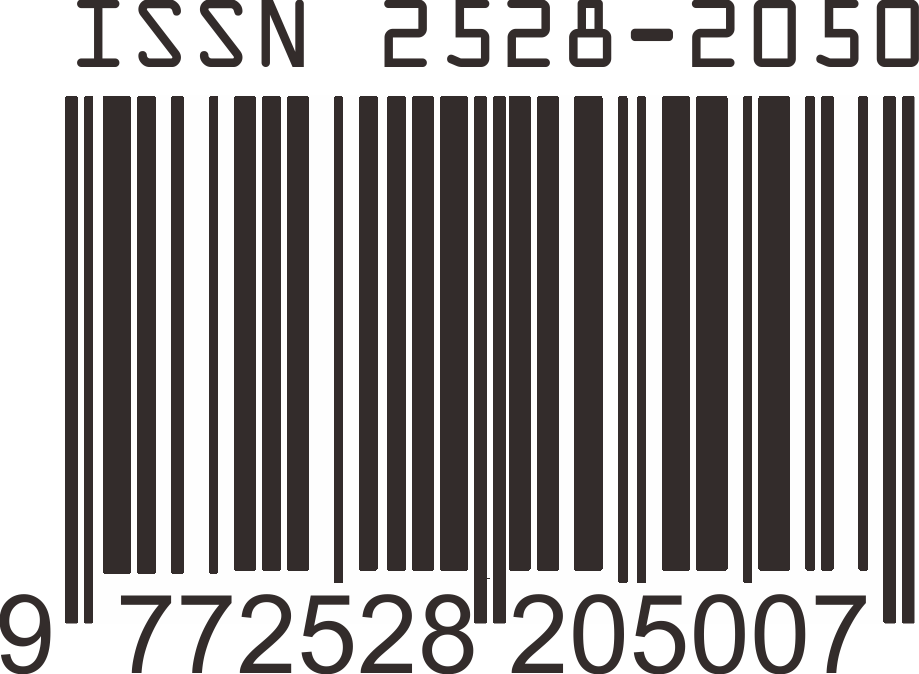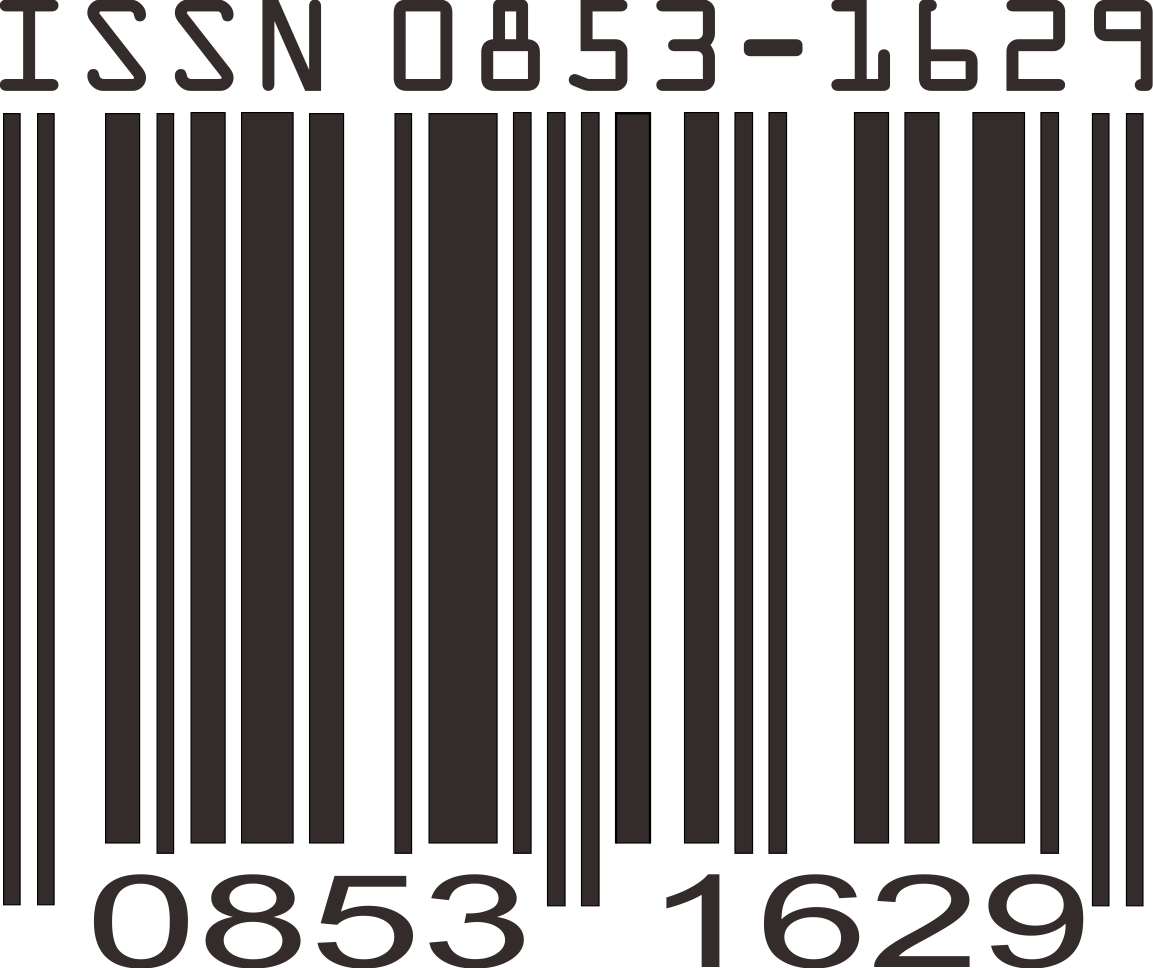Pengaruh Konsentrasi Etanol dan Waktu Maserasi terhadap Rendemen, Kadar Total Fenol dan Aktivitas Antioksidan Ekstrak Rumput Laut Padina australis
Abstrak
Kata Kunci
Teks Lengkap:
PDFReferensi
Airanthi, M.W.A., Hosokawa, M. & Miyashita, K. 2011. Comparative antioxidant activity of edible Japanese brown seaweeds. J. Food Sci., 76: C104–C111. doi: 10.1111/j.1750-3841.2010.01915.x
Aksoy., Mine., İ İ N Gülç., & Ö İ Küfrev İ O Ğ Lu. 2016. In Vitro Antioxidant Profiles of Some Flavonoids. Journal Nature Applied Sciences, 020103-1.doi:10.1063/1.4945929
Ali, S.S., Kasoju N., Luthra A., Singh A., Sharanabasava H., Sahu A., & Bora U. 2008. Indian medicinal herbs as sources of antioxidants. Food Research International, 41, 1-15. doi:10.1016/j.foodres.2007.10.001.
Almey, A.A.A., Khan, A.J., Zahir, S.I., Suleiman, M.K., Aisyah, M.R., & Rahim, K.K. 2010. Total phenolic content and primary antioxidant activity of methanolic and ethanolic extracts of aromatic plants leaves. Journal of Int Food Res, 17, 1077-1084.
Azam MS, Choi J, Lee MS & Kim HR. 2017. Hypopigmenting Effects of Brown Algae-Derived Phytochemicals: A Review on Molecular Mechanisms. Mar. Drugs, 15 (10): pii: E297. doi:10.3390/md15100297.
Batubara I., Mitsunaga T., & Ohashi H. 2009. Screening Antiacne Potency of Indonesian Medical Plants: Antibacterial, Lipase Inhibition, and Antioxidant Activities. Journal of Wood Science, 55 (3): 230-235. doi:10.1007/s10086-008-1021-1.
Boi, V.N., Cuong, D.X., & Vinh, P.T.K. 2017. Effects of extraction conditions over the phlorotannin content and antioxidant activity of extract from brown algae Sargassum serratum. Free Radicals and Antioxidants, 2017; 7(1): 115-122. doi:10.5530/fra.2017.1.17.
D’Orazio, N., Gemello, E., Gammone, M. A., Girolamo, M., Ficoneri, C., & Riccioni, G. 2012. Fucoxantin: a treasure from the sea. Mar. Drugs, 10: 604 - 616. https://doi.org/10.3390/md10030604
Diantika F., Sutan SM., & Yulianingsih R. 2014. The effect of long extraction and concentration and concentration of ethanol solvent extraction antioxidant cocoa beans (Theobroma cacao L.). Jurnal Teknologi Pertanian, 15(3): 159-164.
Dudonne, S., Vitrac, X., Coutiere, P., Woillez, M., & Merillon, J.M. 2009. Comparative study of antioxidant properties and total phenolic content of 30 plant extracts of industrial interest using DPPH, ABTS, FRAP, SOD, and ORAC assays. J. Agric. Food Chem. 57, 1768–1774. doi: 10.1021/jf803011r.
D’Orazio, N., Gemello, E., Gammone, M. A., Girolamo, M., Ficoneri, C., & Riccioni, G. 2012. Fucoxantin: a treasure from the sea. Mar. Drugs, 10 (3): 604 – 616. doi: 10.3390/md10030604
Heim, K.E., Tagliaferro, A.R., & Bobilya, D.J. 2002. Flavonoid antioxidants:chemistry, metabolism and structure-activity relationship. Journal. Nut.r Bio., 13, 572-584.
Hosokawa F., Kudo M., Maeda H., Kohno H.,Tanaka T., & Miyashita K. 2004. Fucoxanthin induces apoptosis and enhances the antiproliferative effect of the PPARg ligand, troglitazone, on colon cancer cells. Journal Biochimica et Biophysica Acta, 1675, 113– 119. doi:10.1016/j.bbagen.2004.08.012.
Husni A, Putra, D.R., & Lelana, I.Y.B. 2014. Aktivitas antioksidan Padina sp. pada berbagai suhu dan lama pengeringan. JPB Kelautan dan Perikanan, 9 (2) : 165 -173.
Jafari, A.A., Miroliaei, M., Angelova, V.T., Emamzadeh, R., Djukic, M.M., Djuric A., & Saso L. 2016. Antioxidant activity and protective role on protein glycation of synthetic aminocoumarins. Electronic Journal of Biotechnology, 19 (6): Valparaíso nov. 2016. 1-6. doi:10.1016/j.ejbt.2016.08.004.
Kaewnarin K., Niamsup H., Shank L., & Rakariyatham N. 2014. Antioxidant and antiglycation activities of some edible and medicinal plants. Chiang Mai Journal of Science, 41(1): 105-116.
Kang, C., Jin, B., Lee, H., Cha, M., Sohn. E., Moon, J., Park, C., Chun, S., Jung, E., Hong, J.S., Kim, J., & Kim, E. 2010. Brown algae Eclonia cava attenuates type 1 diabetes by activating AMPK and AKT signaling pathways. Journal of Food Chemistry and Toxicology, 48: 509–516. doi: 10.1016/j.fct.2009.11.004.
Koivikko R. 2008. Brown Algal Phlorotannins Improving and Applying Chemical Methods. PhD Thesis, University of Turku Finland. Turku, 61 p.
Lee., Authors Wei-kang., Yi-yi Lim., & Adam Thean-chor Leow. 2017. Biosynthesis of Agar in Red Seaweeds: A Review. Carbohydrate Polymer, 164: 23-30. doi: 10.1016/j.carbpol.2017.01.078.
Maharani, F., Nurjanah, Suwandi R., Anwar E., & Hidayat T. 2017. Bioactive compounds of seaweed Padina australis and Eucheuma cottoni as sunscreen raw materials. Journal Marine, 1-20. doi:10.17844/iphpi.v.20il1.16553.
Masuda T., Isoke J., Jitoe A., & Nakatani N. 1992. Antioxidative curcuminoids from rhizomes of Curcuma xanthorrhiza. Phytochemistry, 31(10), 3645-3647.
Naik, G.H., Priyadarsini, K. I., Satav, J.G., Banavalikar, M.M., Sohoni, D.P., Biyani, M.K., & Mohan, H. 2003. Comparative antioxidant activity of individual herbal components used in ayurvedic medicine. Phytochemistry, 63 (1), 97-104.
Nursid, M., Marraskuranto, E., Atmojo, K.B., Hartono, T.M.P., Meinita, M.D.N., Riyanti. 2016. Investigation on antioxidant compounds from marine algae extracts collected from Binuangeun coast, Banten, Indonesia. Squalen Bull. of Mar. and Fish. Postharvest and Biotech., 11 (2) : 59-67. doi: http://dx.doi.org/10.15578/squalen.v11i2.243.
Nursid, M & Noviendri D. 2017. Kandungan fukosantin dan fenolik total pada rumput laut cokelat Padina australis yang dikeringkan dengan sinar matahari. JPB Kelautan dan Perikanan, 12 (2): 117-124. doi : http://dx.doi.org/10.15578/jpbkp.v12i2.341.
Peng, J., Yuan, J. P., Wu, C. F., & Wang, J. H. 2011. Fucoxanthin, a marine carotenoid present in brown seaweeds and diatoms: metabolism and bioactivities relevant to human health. Mar. Drugs, 9: 1806–1828. doi: 10.3390/md9101806.
Premakumara, G.A.S., Abeysekera, W.K.S.M., Ratnasooriya, W.D., Chandrasekharan, N.V., & Bentota AP. 2013. Antioxidant, anti-amylase and anti-glycation potential of brans of some Sri Lankan traditional and improved rice (Oryza sativa L.) varietes. Journal of Cereal Science, 58: 451-456.
Sarwono J. 2009. Statistik Itu Mudah: Panduan Lengkap untuk Belajar Komputasi Statistik Menggunakan SPSS 16. Penerbit Andi, Yogyakarta: 345 p.
Sachindra N., Santo M., Maeda H., Hosokawa M., Niwano Y., Kohno M., & Miyashita K. 2007. Radical scavenging and singlet oxygen quenching activity of marine carotenoid fucoxanthin and its metabolites. Journal of Agricultural and Food Chemistry, 55: 8516-8522.
Sathya, R., Kanaga, N. Sankar, P., & Jeeva, S. 2013. Antioxidant properties of phlorotannins from brown seaweed Cystoseira trinodis (Forsskal) C. Agard. Arabian Journal of Chemistry, 10 : S2608–S2614. https://doi.org/10.1016/j.arabjc.2013.09.039
Scalzo J., Politi A., Pllegrini N., Mezzetti B., & Battino M. 2005. Plant genotype affects total antioxidant capacity and phenolic contents in fruit. Nutrition: 21, 207-213. doi:10.1016/j.nut.2004.03.025.
Shadmani A., Azhar I., Mazhar F., Hassan M.M., Ahmed SW., Ahmad I., Usmanghani K., & Shamim, S. 2004. Kinetic studies on Zingiber Officinale. Pakistan Journal of Pharmaceutical Sciences, 17(1): 47-54.
Shiratori k., Ohgami K., Ilieva I., Jin X., Koyama Y., Miyashita K., Yoshida K., Kase S., & Ohno S. 2005. Effects of fucoxanthin on lipopolysaccharide-induced inflammation in vitro and in vivo. Journal Experimental Research, 81(4): 422–428. doi:10.1016/j.exer.2005.03.002
Stankovic, M.S. 2011. Total phenolic content, flavonoid concentration and antioxidant activity of Marrubium peregrinum L. extract. Kragujevac J. Sci., 3: 63–72.
Tiwari, P., Kumar, B., Kaur, M., Kaur, G. & Kaur, H. (2011) Phytochemical Screening and Extraction: A Review. Internationale Pharmaceutica Sciencia, 1, 98- 106.
Wang, T., Jónsdóttir, R., Liu, H., Gu, L., Kristinsson, H.G., Raghavan, S.,Ólafsdóttir, G. 2012. Antioxidant Capacities of Phlorotannins Extracted from the Brown Algae Fucus vesiculosus. Journal of Agricultural and Food Chemistry, 60 (23): 5874-5883, doi: 10.1021/jf3003653.
Wu, X, J. & Hansen, C. 2008. Antioxidant capacity, phenolic content, polysaccharide content of Lentinus edodes grown in Whey permeate based submerged culture. J. Food Sci.73: 434–438.
Yuguchi, Y., Tran, V.T.T, Bui, L.M., Takebe, S., Suzuki, S., Nakajima, N., Kitamura, S., & Thanh, T.T.T. 2016. Primary Structure, Conformation in Aqueous Solution, and Intestinal Immunomodulating Activity of Fucoidan from Two Brown Seaweed Species Sargassum crassifolium and Padina australis. Journal Carbohydrate Polymers 147, 69–78. doi:10.1016/j.carbpol.2016.03.101.
Zubia, M., Robledo, D., & Freile-Pelegrin Y. 2007. Antioxidant activities in marine macroalgae from the coasts of quintana Roo and Yucata. Journal of Applied Phycology,19, 449–458
Article Reads
Total: 9816 Abstrak: 1466 PDF: 8322Article Metrics
Metrics powered by PLOS ALM
Refbacks
- Saat ini tidak ada refbacks.
Laman ini dikelola oleh:
Bio Publisher
The Faculty of Biology Publishing
Laman ini dikelola oleh:
Penerbitan Fakultas Biologi
Universitas Jenderal Soedirman
Jalan dr. Suparno 63 Grendeng
Purwokerto 53122
Telepon: +62-281-625865
Email: biologi@unsoed.ac.id
Laman ini menggunakan:
OJS | Open Journal System
Software pengelolaan jurnal ilmiah online. Versi yang digunakan adalah 2.4.8.0.
Metadata artikel terdaftar di:
Crossref
Agen resmi internasional pendaftaran Digital Object Identifier (DOI)
Artikel jurnal ini terindeks:









